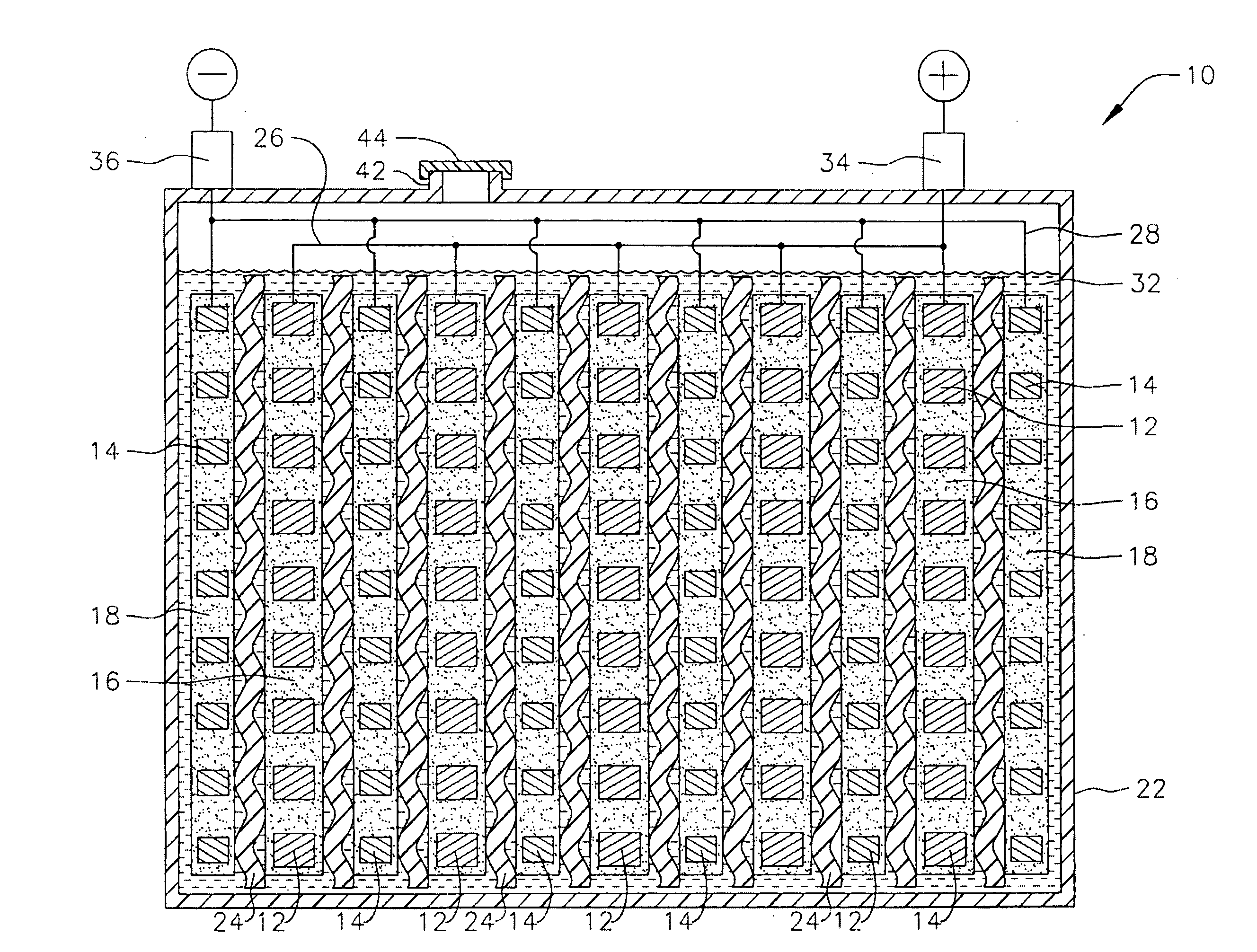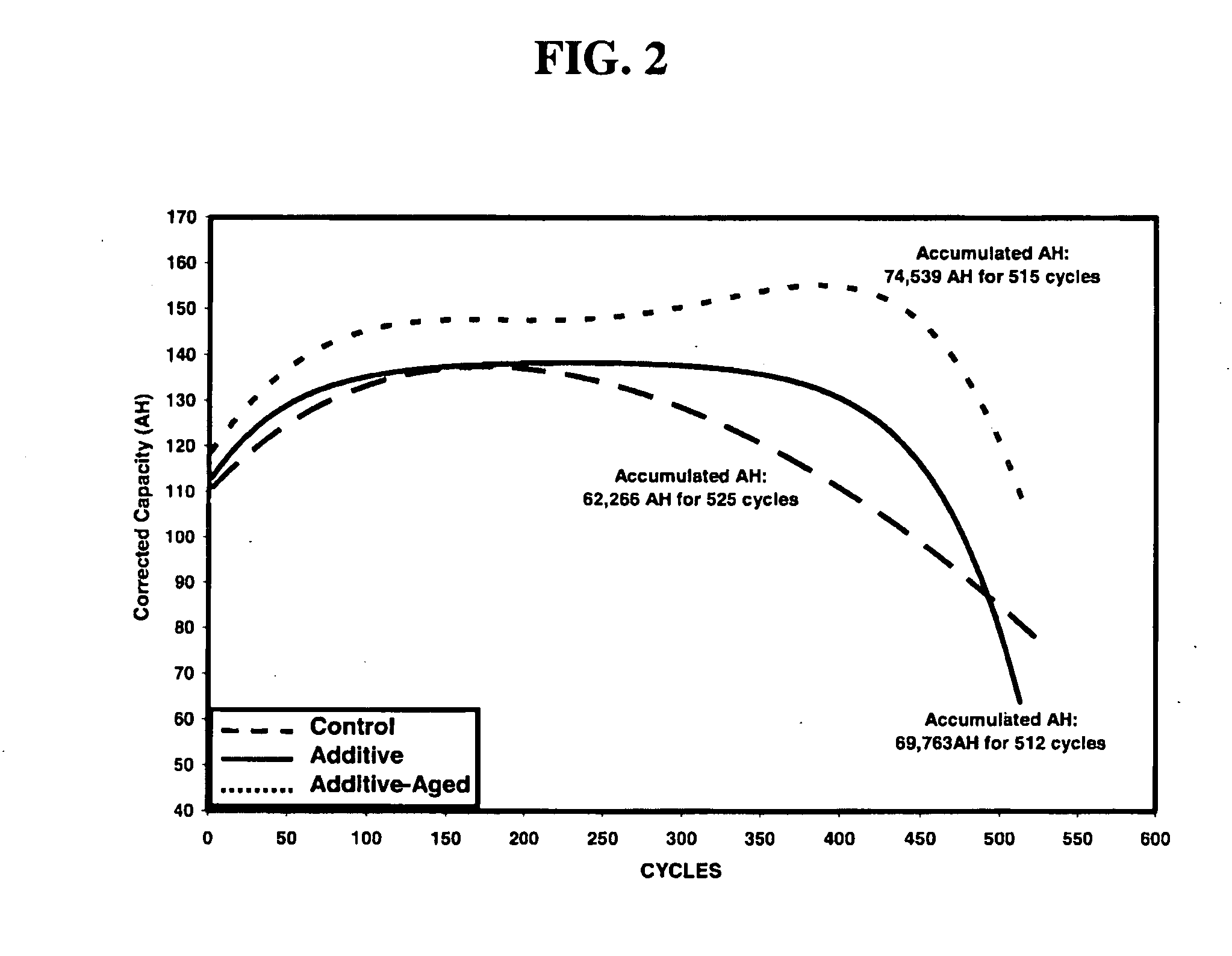Flooded lead-acid battery and method of making the same
- Summary
- Abstract
- Description
- Claims
- Application Information
AI Technical Summary
Benefits of technology
Problems solved by technology
Method used
Image
Examples
example 1
Positive Active Material Paste and Positive Plate Formation
[0037]A positive active material paste was made by first mixing 2400 lbs of lead oxide powder and 2 lbs of polyester fiber in a mixer. To that mixture, 4.40 lbs of tin sulfate was added while mixing continued. Then, specified amounts of water and acid were added and mixing continued until a positive active material paste was formed. The positive paste included lead oxide, polyester fiber, water, and aqueous sulfuric acid. The paste density was about 4.5 g / cc, which is considered a high density paste and suitable for cycling applications. The resulting paste was gray in color and had a tin sulfate concentration of about 0.18 wt % on a dry basis.
[0038]The positive active material paste was applied to identical positive electrode grids using a Mac Engineering & Equipment Co. commercial pasting machine to form pasted positive plates. The positive electrode grids were cast using a Wirtz Manufacturing Co. grid casting machine usin...
examples 2-3
Battery Assembly
[0040]According to Examples 2 and 3, the positive plates formed according to Example 1 were assembled into twelve production batteries of the type manufactured and sold by Trojan Battery Corporation as Model T105 (3-cell, 6-volt, deep discharge lead-acid battery, a type commonly used in electric golf cars). In other words, with the exception that the positive plates of Example 1 were used instead of conventional positive plates, all other components and manufacturing steps were identical to those employed in making conventional Model T105 batteries. In particular, individual cell groups were formed by stacking eight positive plates of Example 1 and nine conventional negative plates in an alternating arrangement with conventional separators between them. The negative plates comprised negative electrode grids made from an alloy of 2.75 wt % antimony in lead. Each negative electrode grid was pasted with negative paste comprising lead oxide, deep cycle expander, polyeste...
PUM
| Property | Measurement | Unit |
|---|---|---|
| Weight ratio | aaaaa | aaaaa |
| Molar ratio | aaaaa | aaaaa |
Abstract
Description
Claims
Application Information
 Login to View More
Login to View More - R&D
- Intellectual Property
- Life Sciences
- Materials
- Tech Scout
- Unparalleled Data Quality
- Higher Quality Content
- 60% Fewer Hallucinations
Browse by: Latest US Patents, China's latest patents, Technical Efficacy Thesaurus, Application Domain, Technology Topic, Popular Technical Reports.
© 2025 PatSnap. All rights reserved.Legal|Privacy policy|Modern Slavery Act Transparency Statement|Sitemap|About US| Contact US: help@patsnap.com



